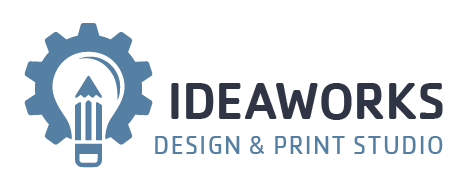Sign Materials & Uses
When it comes to signage, the choice of materials plays a crucial role in both functionality and aesthetics. The right material can ensure durability, visibility, and a professional appearance, making it essential to understand the options available. In this blog post, we’ll explore the most common sign materials and their ideal applications.
1. Acrylic / Polycarbonate
Acrylic and polycarbonate materials are versatile and durable materials often used for high-end, professional signage. Stronger than glass and more shatter-resistant, they offer a sleek and modern look that lasts.
Applications:
Office signs and directories
Retail store displays
Illuminated signs (backlit or edge-lit)
Benefits:
Lightweight yet sturdy
Resistant to weather and UV rays
Available in various colors and finishes
2. Aluminum
Aluminum is a popular choice for outdoor signage due to its durability and resistance to rust. It’s lightweight and easy to customize with different finishes.
Applications:
Street signs
Parking lot signs
Construction site signs
Benefits:
Weather-resistant
Corrosion-proof
Professional appearance
3. Dibond
Dibond is a composite material made of two aluminum sheets with a solid polyethylene core. It’s highly durable and perfect for outdoor and indoor signage.
Applications:
Outdoor business signs
Exhibition displays
Architectural signage
Benefits:
Lightweight yet rigid
Weatherproof and durable
Smooth surface for high-quality printing
4. Coroplast (Corrugated Plastic)
Coroplast is a lightweight and cost-effective option, often used for temporary or promotional signs. It’s made from corrugated polypropylene, making it water-resistant and easy to transport.
Applications:
Yard signs (e.g., real estate, political campaigns)
Event signage
Temporary directional signs
Benefits:
Affordable
Lightweight
Easy to print on and replace
5. PVC (Polyvinyl Chloride) Plastic
PVC signs are rigid and durable, with a smooth surface that is ideal for vibrant printing. These signs work well both indoors and outdoors, although dibond is a better choice for long-term outdoor use.
Applications:
Trade show displays
Informational signs
Indoor promotional signage
Benefits:
Strong and durable
Resistant to moisture
Smooth, professional finish
6. Foam Board
Foam board is a lightweight material often used for short-term indoor applications. It’s made of a foam core sandwiched between paper or plastic sheets.
Applications:
Presentations
Event displays
POP (Point of Purchase) signs
Benefits:
Inexpensive
Easy to cut and shape
Excellent for vibrant, temporary graphics
7. Wood
Wooden signs are classic and timeless, offering a rustic or handcrafted aesthetic. These signs are often customized with carving, painting, or staining.
Applications:
Business signs for boutique shops
Outdoor parks and recreational signage
Farm and market signs
Benefits:
Natural and rustic appearance
Highly customizable
Durable when properly sealed
8. Magnetics
Magnetic signs are made from flexible magnetic sheeting, making them ideal for temporary and movable applications.
Applications:
Vehicle signage
Temporary promotions
Tool organization labels
Benefits:
Reusable and removable
Easy to reposition
Durable for outdoor use
9. Banner Material
Banner material is typically made from vinyl or mesh, providing a flexible and cost-effective solution for large-format signage.
Applications:
Event banners
Trade show displays
Building wraps
Benefits:
Affordable and versatile
Weather-resistant
Easy to roll up and transport
Choosing the Right Material for Your Sign
The best sign material depends on factors such as location, purpose, budget, and durability requirements. For example:
Use aluminum or dibond for long-lasting outdoor signs.
Opt for corrugated plastic or foam board for temporary indoor displays.
Choose acrylic or plexiglass for a polished, professional look in offices or retail settings.
By understanding the strengths and ideal uses of each material, you can make an informed decision that enhances your brand’s visibility and impact. Need help selecting the perfect material? Contact us for expert guidance and custom sign solutions!

